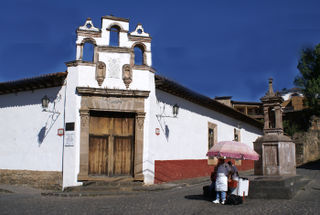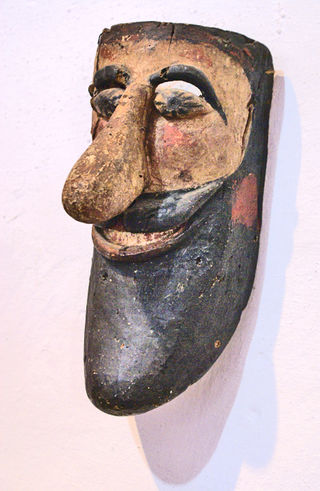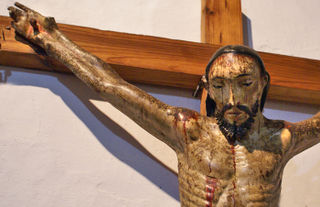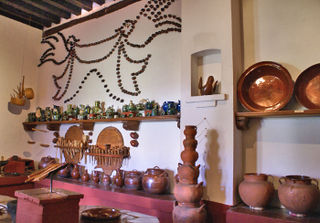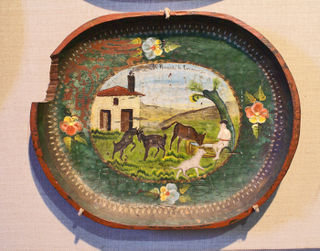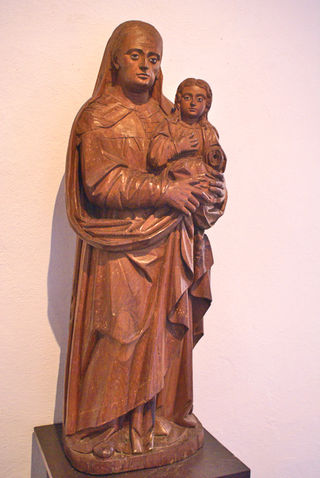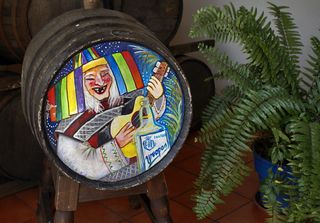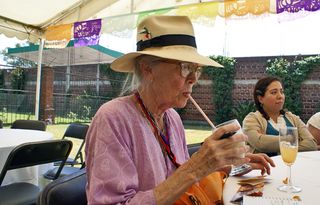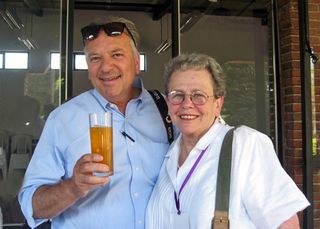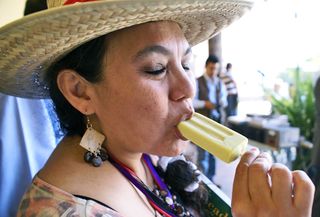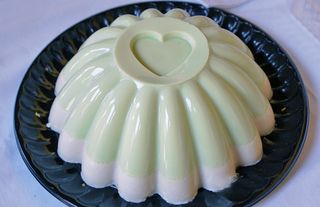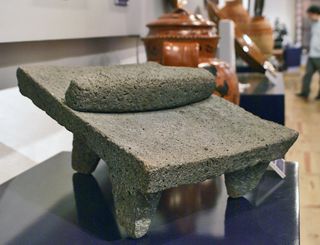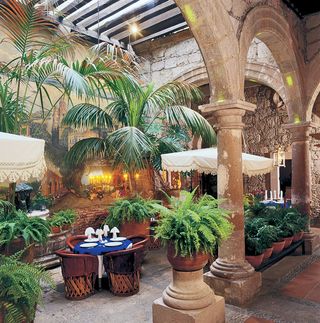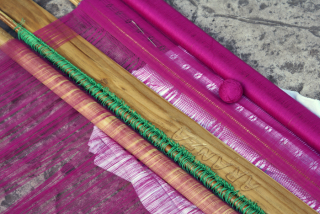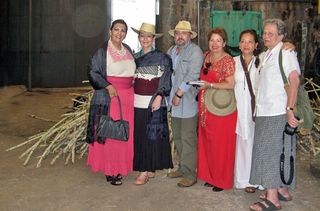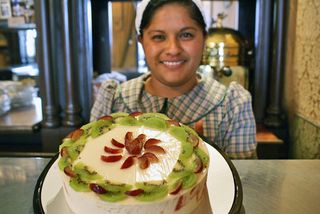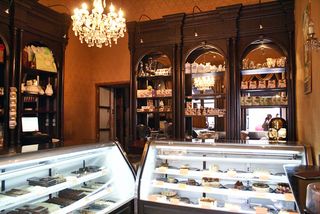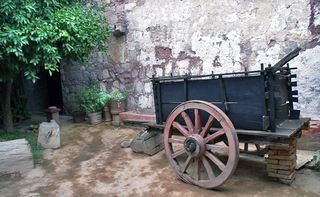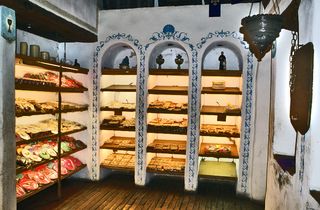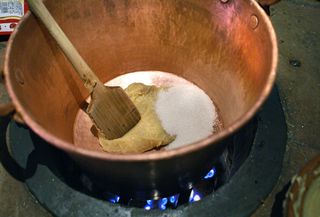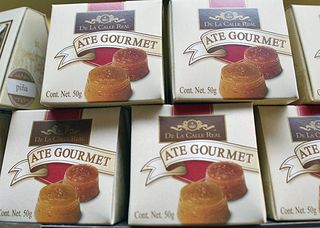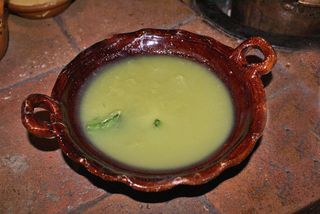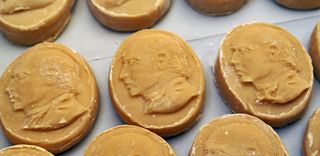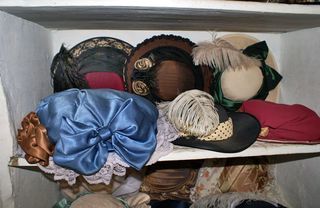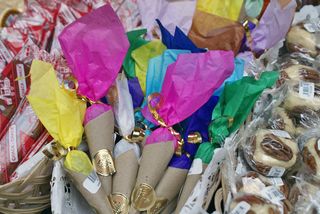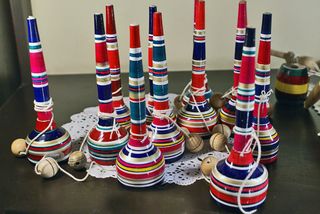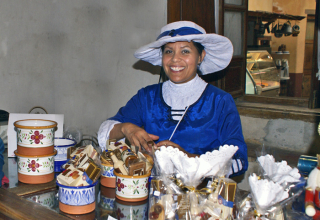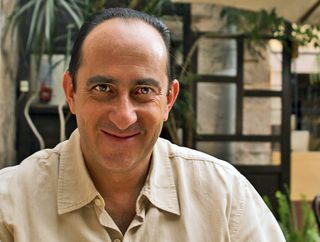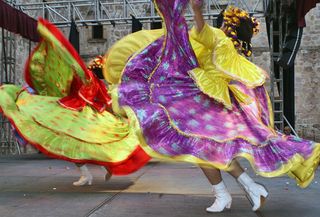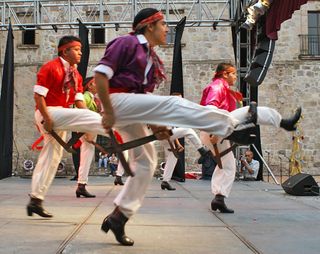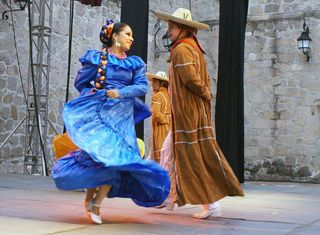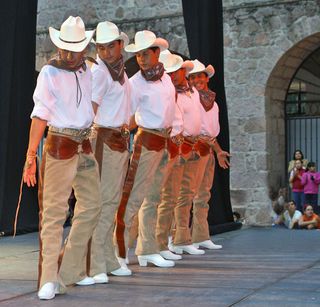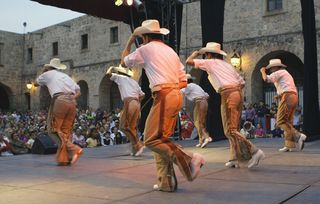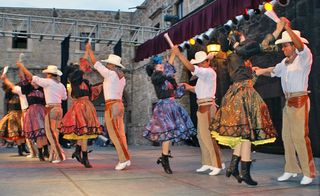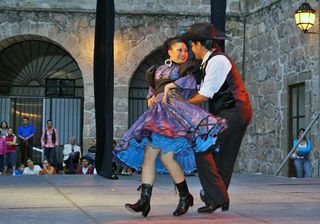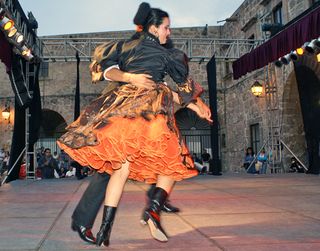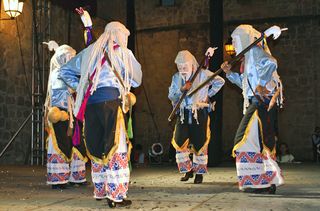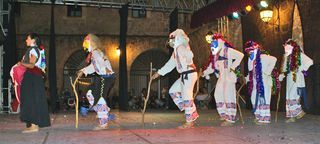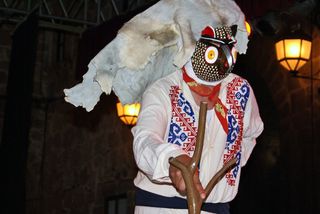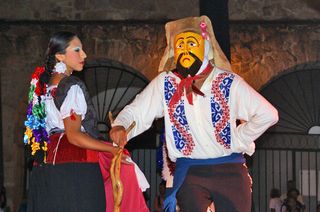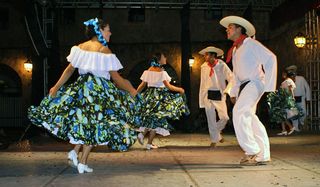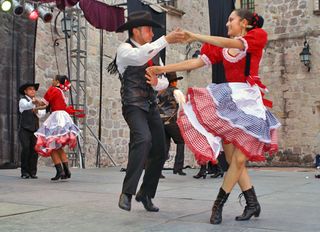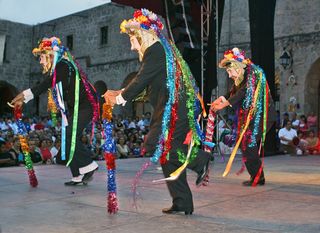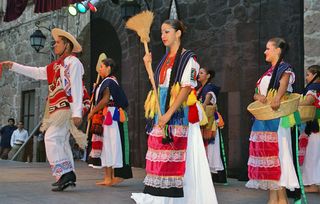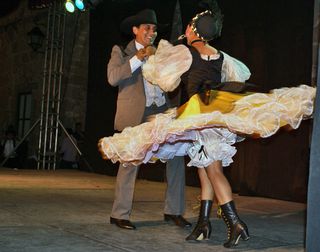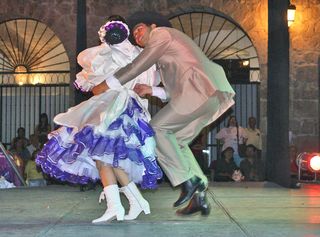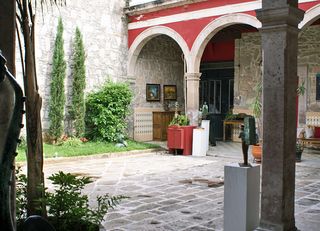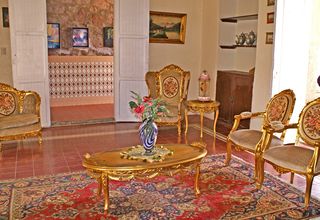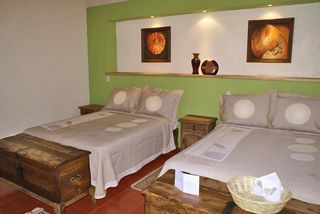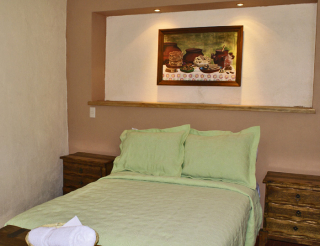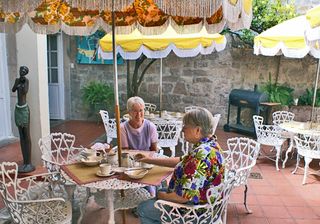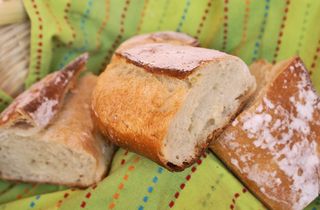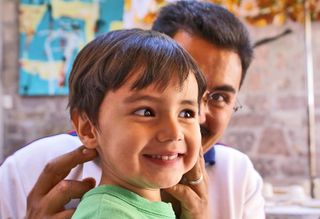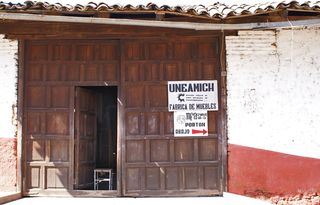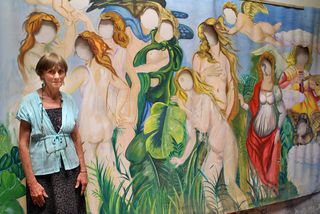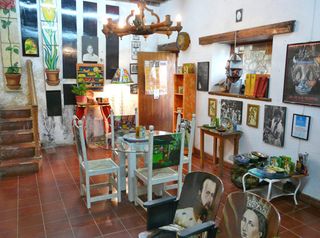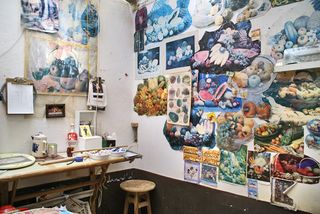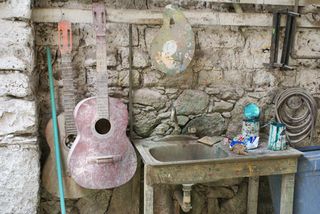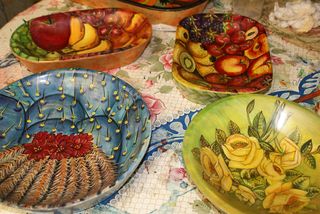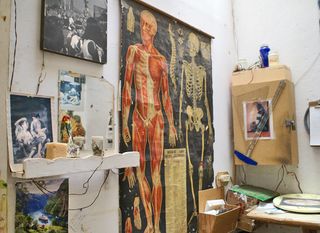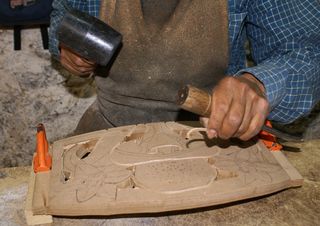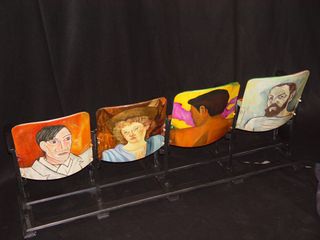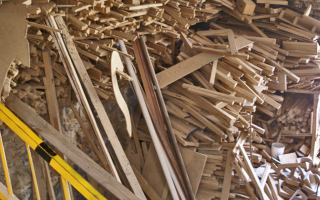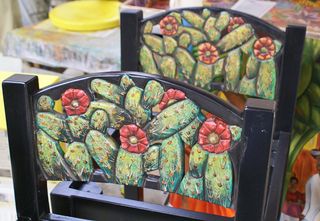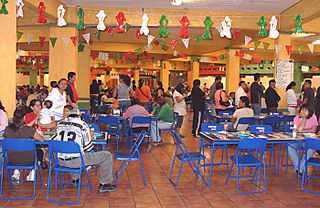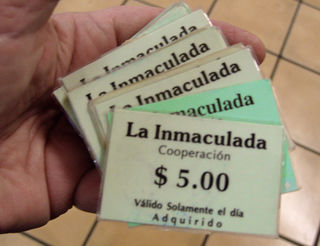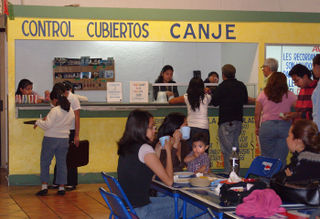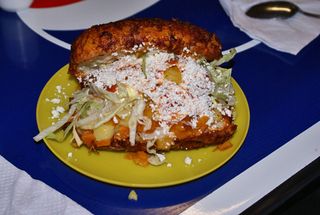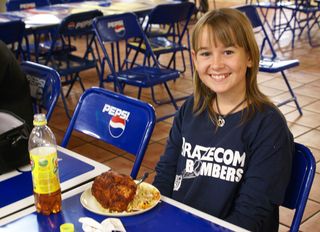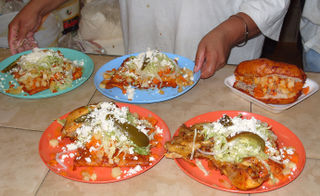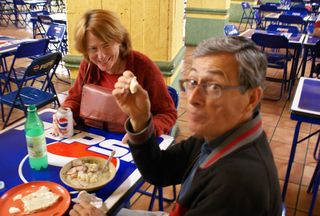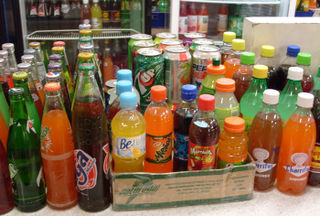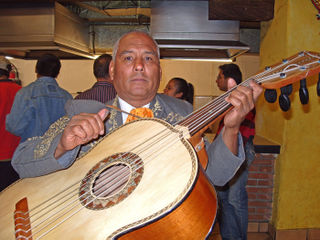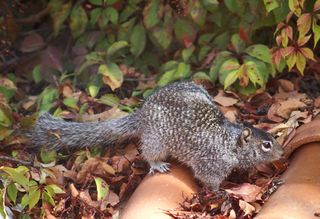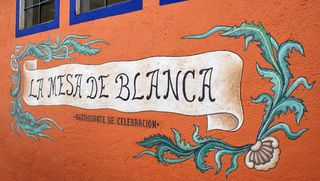
The sign on the entry wall at Restaurante La Mesa de Blanca in Ziracuaretiro, Michoacán says that the place is a "restaurant of celebration". Whether your celebration is simply a pleasant comida (midday meal) for you and your family or a huge party for friends, the joy of life overflows at Blanca's table.
Two weeks ago, Mexico Cooks! wrote about the glorious Ruta de Aromas y Sabores 2010 tour through Michoacán. For me, the highlight of that part of the tour was our stop for comida at Restaurante La Mesa de Blanca in tiny, far off-the-beaten-track Ziracuaretiro.
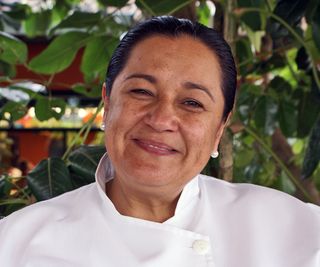
The wonderful Sra. Chef Blanca Estela Vidales, who, together with her equally wonderful husband, Don Rodrigo Lemus, founded La Mesa de Blanca nearly nine years ago. Chef Blanca's joyful personality fills the restaurant with happiness.
Nearly 100 well-known chefs and journalists from all parts of the world had boarded tour buses and vans that morning, heading for truly fascinating culinary destinations in west-central Michoacán. The day bore down on all of us; no matter that we were eager to do and taste and experience everything on the tour agenda, the plus-ninety degree heat, blazing sun, and the accumulated exhaustion of nearly two weeks on the road had us all fainting in our bus seats. The buses took ever more twisting mountain roads through enormous avocado orchards as many of us dozed in silent appreciation of the on-board air conditioning. But where were we going? A few more turns in the road and we stopped in the tiniest town imaginable. The driver opened the bus door and WOW! The booming tuba and brilliant horns of a brass band shook the sleep from all of our heads.
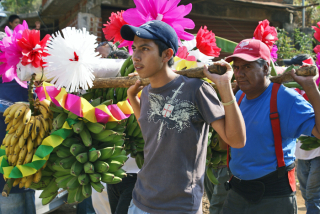
The ofrenda de plátanos (banana offering) in Ziracuaretiro.
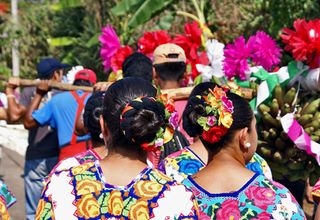
The Aromas y Sabores 100-member tour, preceded by a brass band, the ofrenda de plátanos, and a group of restaurant servers dressed in Michoacán's ropa típica (regional clothing) danced up the hill to the restaurant.
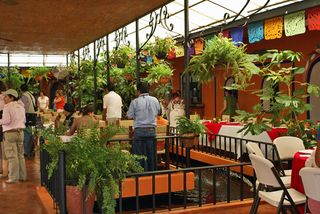
The charming restaurant was ready for the onslaught of the suddenly hungry members of the tour. Open to the fresh mountain breezes, decorated with tropical greenery, and roomy enough for the largest party, La Mesa de Blanca is a gorgeous surprise. Click on the photo for a better view of the restaurant's interior stream filled with golden koi.
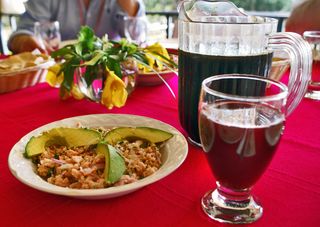
Chef Blanca made certain that every table was complete with a variety of botanas (appetizers) and aguas frescas (fresh-made juice drinks. The house-signature agua fresca is made with locally-grown blackberries. The botana pictured above is ceviche made of Michoacán-farmed rainbow trout and the famous Hass avocados grown in the region around Uruapan.
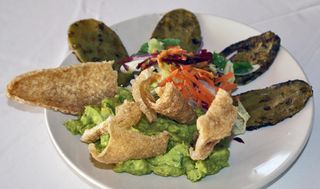
Another botana, this time Blanca's famously delicious guacamole with house-made chicharrón and grilled nopal cactus paddles. The entire meal was accompanied by interleaved stacks of fresh-from-the-comal blue and white tortillas.
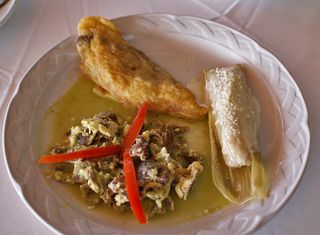
After a choice of either tortilla soup or sopa de milpa (chicken broth with corn and squash)–and some diners had both!–the main course included a locally grown, sun-dried chile pasilla stuffed with cheese, aporreadillo en salsa de aguacate (dried, seasoned beef and scrambled egg in avocado sauce), and a heavenly uchepo (regional specialty fresh-corn tamal).
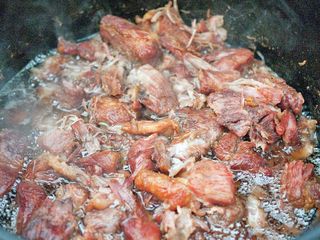
In addition, servers brought each table a huge wooden batea (tray), lined with banana leaves and piled with freshly made, juicy carnitas. The carnitas were so delicious that the six tour members at Mexico Cooks!' table gobbled them all down and asked for more, which also promptly disappeared.

Along with locally-grown coffee, every diner sampled three desserts: volcán de mango (mango 'volcano' served on a purée of local strawberries), a tamal de zarzamora (sweet blackberry tamal) and ice cream made from regionally-grown mamey. Every item of meat and produce is produced within shouting distance of the restaurant.
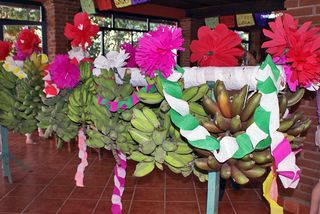
The ofrenda de plátanos, called "La Cuelga", is a local Ziracuaretiro tradition celebrated especially during the banana harvest. Why? In 1554, Don Vasco de Quiroga brought the first five banana plants to this spot in Michoacán from the island of Santo Domingo. In thanksgiving for the first successful banana harvest in the New World, these offerings are still made every year on November 30. Aromas y Sabores 2010 was privileged to experience the tradition at La Mesa de Blanca.
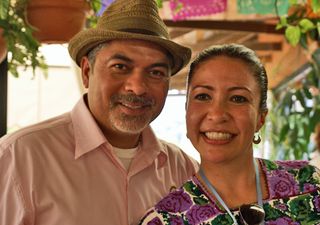
Mexico Cooks!' delightful friends, Juan Bosco Castro García (Director of Promotion for the State of Michoacán's Department of Tourism) and Executive Chef Lucero Soto Arriaga, Restaurante LU, Hotel Best Western Casino, Morelia. Every person traveling with the Ruta de Aromas y Sabores 2010 tour had a marvelous time–and an equally marvelous comida–at La Mesa de Blanca.
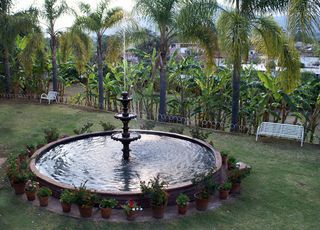
Every table in the restaurant offers a beautiful view. Choose from misty Michoacán mountainsides, the Ziracuaretiro pink and white church tower, or this vision of the restaurant garden and banana trees; no matter where you look, you will find a fresh and restful vision.
Whether you are visiting Uruapan, Pátzcuaro, or Morelia, it's a simple drive to La Mesa de Blanca. You need not be part of a special tour to receive a very special welcome and eat a very special meal. Please, when you go, tell Sra. Blanca that you read about her here on Mexico Cooks!–and give her a big hug from me.
La Mesa de Blanca
Avenida Ferrocarril sin número
Ziracuaretiro, Michoacán, México
Tels: 01.423.593.0355 or 01.423.593.0356
Looking
for a tailored-to-your-interests specialized tour in Mexico? Click
here: Tours.
